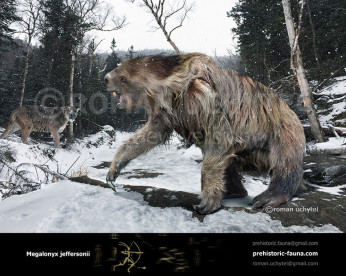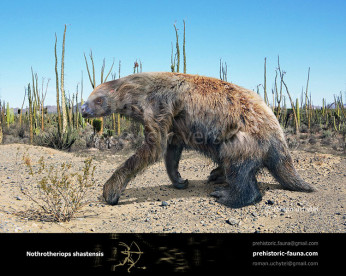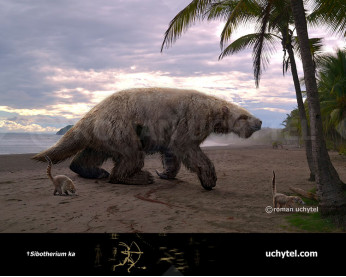Eremotherium
474474
Eremotherium (†Eremotherium (Spillmann, 1948))
†Megatherium laurillardi
Order: Pilosa
Family: †Megatheriidae
Temporal range: Early Pliocene - Early Holocene (4.9–0.011 Ma, South America, Central America, and parts of southern North America)
Dimensions: length - 6 m, height -210 сm, weight - 2500 - 4500 kg
A typical representative: Eremotherium rusconi
Eremotherium is an extinct genus of ground sloth of the family Megatheriidae, endemic to northern South America, Central America, and parts of southern North America during the Pleistocene epoch. It lived from 4.9 mya —11,000 years ago existing (as a genus) for approximately 4.889 million years. Several species of Eremotherium were among the largest known ground sloths, rivalling Megatherium americanum in size, with E. rusconi reaching a length up to 6 m and a weight of more than 3 tonnes. Eremotherium arrived in North America during the Late Pliocene or earliest Pleistocene during the Great American Interchange, with remains of E. eomigrans in Florida dating to the late Blancan, around 2.2 to 1.9 Ma
Оплата
У Вас є кілька зручних способів купівлі зображення: кредитна чи дебетова картка Visa, Mastercard, Maestro; PayPal або банківський переказ
Eremotherium (†Eremotherium (Spillmann, 1948))
†Megatherium laurillardi
Order: Pilosa
Family: †Megatheriidae
Temporal range: Early Pliocene - Early Holocene (4.9–0.011 Ma, South America, Central America, and parts of southern North America)
Dimensions: length - 6 m, height -210 сm, weight - 2500 - 4500 kg
A typical representative: Eremotherium rusconi
Eremotherium is an extinct genus of ground sloth of the family Megatheriidae, endemic to northern South America, Central America, and parts of southern North America during the Pleistocene epoch. It lived from 4.9 mya —11,000 years ago existing (as a genus) for approximately 4.889 million years. Several species of Eremotherium were among the largest known ground sloths, rivalling Megatherium americanum in size, with E. rusconi reaching a length up to 6 m and a weight of more than 3 tonnes. Eremotherium arrived in North America during the Late Pliocene or earliest Pleistocene during the Great American Interchange, with remains of E. eomigrans in Florida dating to the late Blancan, around 2.2 to 1.9 Ma

-797x638.jpg)
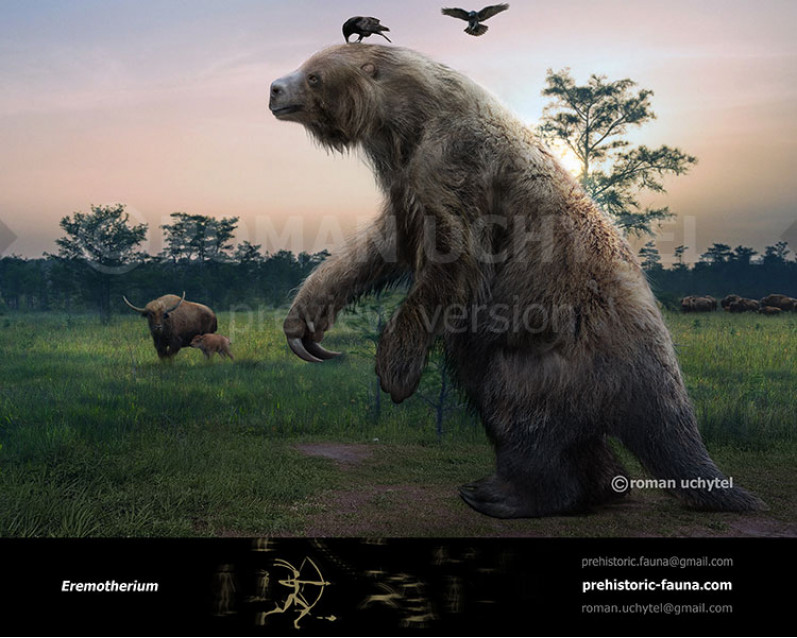

-797x638.jpg)
2-1-797x638.jpg)
3-797x638.jpg)
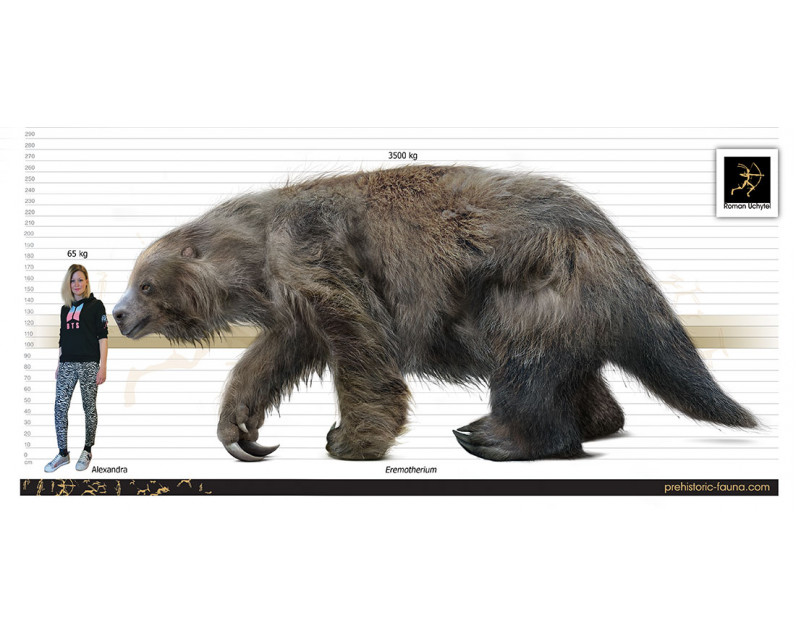
-70x56.jpg)


-70x56.jpg)
2-1-70x56.jpg)
3-70x56.jpg)



